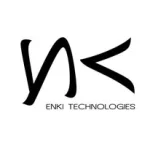
To understand what’s to be expected with the new 5G technology, one should first look back at the advantages and disadvantages of the previous generations of cellular technology.
2G was launched in 1991. 2G (second generation) revolutionized cellular technology, providing a more efficient system with added benefits such as text messages and picture messages. Unlike 1G, which relied on analog telecommunication, 2g introduces digital telecommunication. Digital has a much lower radio frequency than analog, making calls easier to understand, as there was less static picked up during a call. Lower radio frequencies also made 2G cheaper than its predecessor.
However, 2G had its limitations, including weak signal transitions in areas without network coverage. Dropped calls were also more frequent on digital signals.
3G brought cellphone users better access to the Internet and other media services. What sold users on 3G was its high bandwidth (a more extensive range of frequencies within a given band). Users could access the Internet and their favorite websites just as quickly on their phones as on their desktops. However, 3G was expensive. People often had to buy new phones or other costly assorted attachments to make their old phone 3G-compatible.
4G improved upon 3G’s multimedia features. 3G downloaded content more quickly, had a higher bandwidth than 3G, and was ultimately much faster than 3G. But like 3G, users often had to buy new phones that were 4G compatible. The speed of the digital frequencies was also affected by the number of people using it, meaning downloading and Internet speeds often slowed when more people used 4G.
The 5G network will provide even more significant data transmission speeds than its predecessor, 4G. 5G is also expected to be much faster than 4G, being able to receive signals almost instantaneously. As a result, 5G should allow more users to utilize its digital frequencies without slowing down.



